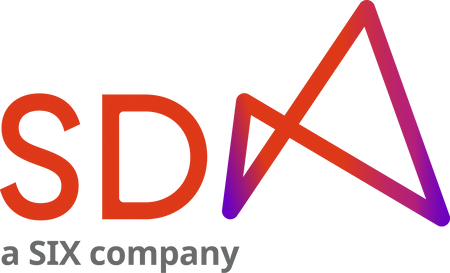Olaf Ransome is the Head of SDX’s CSD function. As “The Bankers’ Plumber”, he has had a long and illustrious career in payments, settlements and post-trade infrastructure. Process optimization is his passion, which has led to his keen interest in developing the market infrastructure to support the digital asset markets of the future. We sat down with Olaf to discuss his views on SDX’s recent digital bond issuance, the benefits that process improvement can bring to financial markets, and the role of cryptocurrencies in the digital asset landscape.
We’ve discussed SDX’s recent digital bond issuance extensively elsewhere, particularly with respect to its significance from a legal and technical point of view. What did the issuance represent from your perspective?
For me, the bond issuance represented SDX putting a marker down so that people – and the market – can see it. From a legal and technical perspective, it worked and was highly successful in its uptake. This generates much-needed discussion and spurs people to think about what else they can do. We had people approaching us with novel ideas and exploring how SDX could enable their implementation ahead of the issuance.
Now that the bond is out there, it’s galvanized more interest and sets the stage for us to bring new, innovative products and services to market. The bond has also proven the concept in a public, regulated environment, but there’s also much to be done in private markets. Digital assets have the potential, through their ability to streamline post-trade processing and make lifecycle management more automated and efficient, to deliver huge benefits in private markets. Digitization can lead to more distribution opportunities for private placements – beyond the house bank – and this not only opens up the investor base for issuers, but also creates new investment opportunities for investors.
SDX has also launched its own DLT-based central securities depositary (CSD). SIX already has one – so why do we need a second CSD, and what’s the significance of having it on DLT? What capabilities does it add?
A key feature and benefit of our digital bond issuance is that it can be atomically traded and settled, meaning that settlement is instantaneous at the point of trade execution. A DLT-based CSD enables this atomic settlement. In Switzerland, however, we still have intermediated securities – meaning that we still need a so-called issuer CSD to create transferable securities, which subsequently can be tokenized and represented electronically.
What’s the overarching theme across all your strands of work at the moment? What pulls them all together?
In large part, my focus is on helping to shape process improvement across the market. The advent of DLT and blockchain has given rise to many opportunities for process improvement. A single ledger shared by all parties to a transaction eliminates the need for expensive reconciliations, and the introduction of programmability and smart contracts enables greater automation. Process improvement may not sound very exciting, but it is probably the single most significant aspect of the shift to digital assets.
Let’s take liquidity costs, for example. It is very expensive to maintain liquidity buffers, which are necessary due to the post-trade spaghetti that we currently have, which leads to settlement latencies. Add in a reliance on correspondent banking and the need to have intraday liquidity buffers in multiple places, and it is all enormously expensive and largely misunderstood. However, when you remove settlement latency, you don’t need these liquidity buffers all over the place, and you can use your funds more efficiently. The efficiencies that can be gained in liquidity costs by far dwarf the costs of associated process change.
Where will most liquidity be in the next few years when it comes to digital assets? What does this mean for FMIs such as SDX?
There is a tendency to think of cryptocurrencies in the philosophical context of whether things like Bitcoin are a “good thing” or a “bad thing”. However, from the perspective of a market infrastructure provider, cryptocurrencies form the majority of digital assets at the moment. If you don’t get involved with solutions for those things now, then you’ll be out of the conversation when it comes to the future of digital assets. If you understand that cryptocurrency is a step on the journey to digital assets, you should feel more comfortable doing something in this space.
There is demand from investors for these assets, but this is not matched by the supply from regulated financial institutions such as investment banks and private banks. Sophisticated investors are doing their due diligence and questioning the market infrastructures that their banks are using. Firms such as SDX can help financial institutions to expand and adopt cryptocurrencies – and to better support their clients – by providing the regulated infrastructure to support these activities.
Cryptocurrency trading can also be a gateway to the more widespread adoption of traditional digital assets. As institutions become more accustomed to the market infrastructures that support secure, regulated cryptocurrency trading, it becomes less daunting to consider adopting digital securities. Moreover, Crypto trading is also 24/7. This forces institutions and the market to start thinking about how they can support 24/7 availability, trading and settlement – an important prerequisite to the adoption of central bank digital currencies (CBDCs) and private digital money solutions in financial markets.

